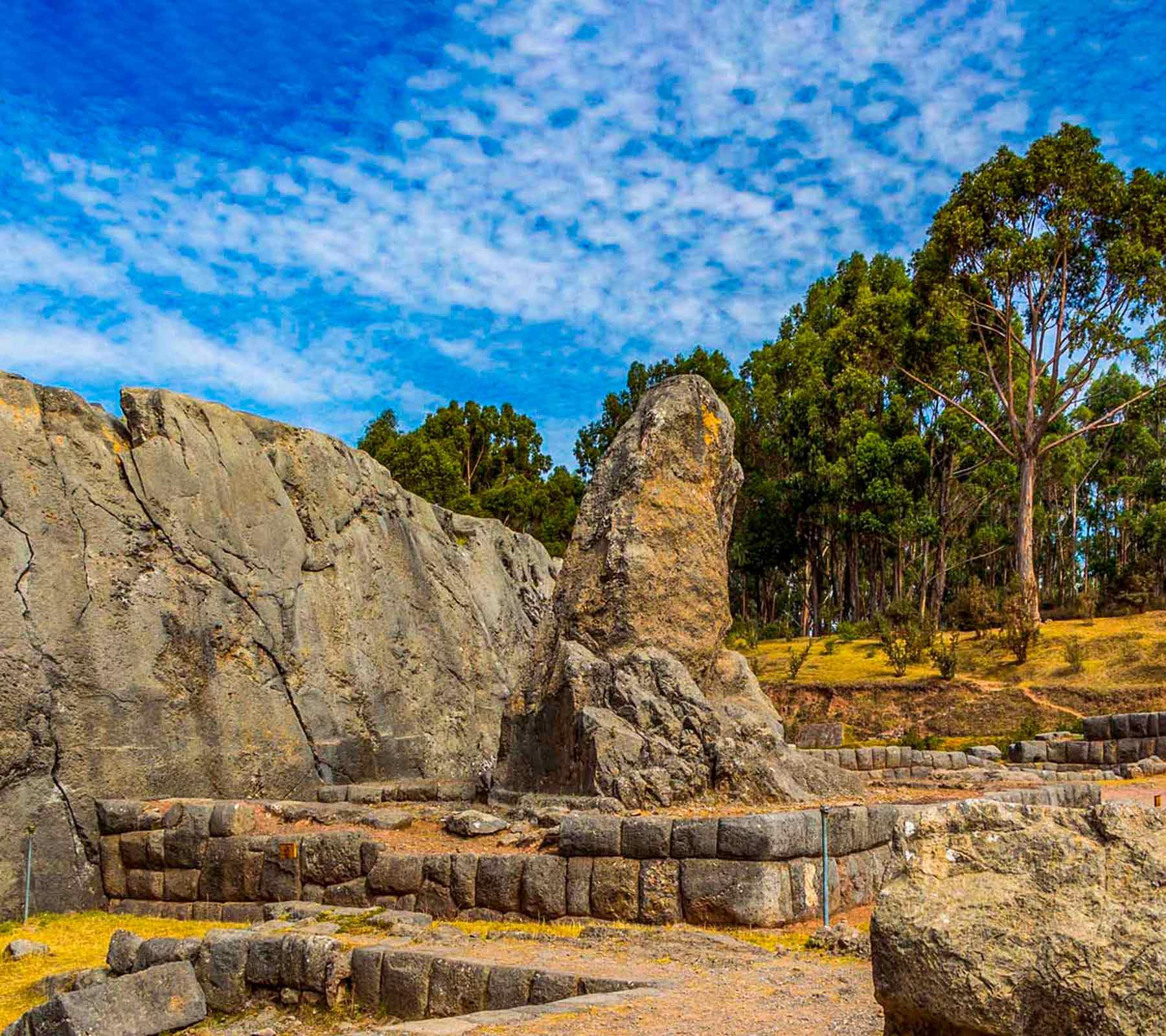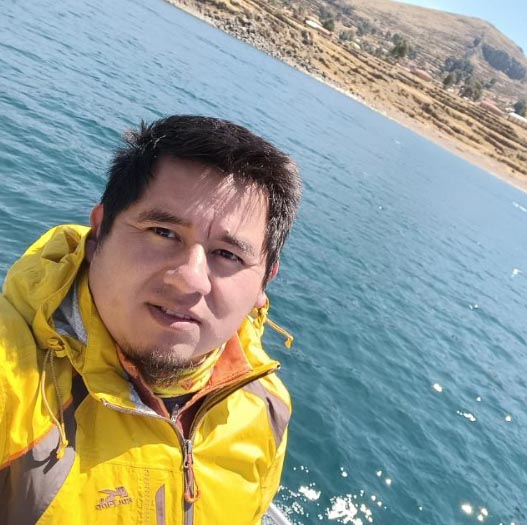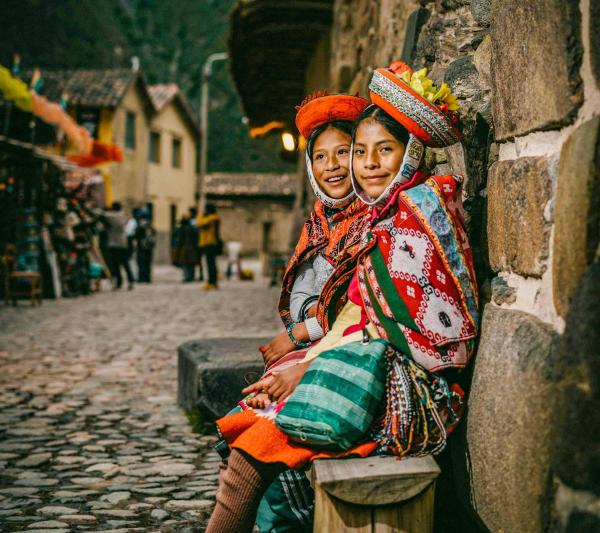Qenqo, also spelled Kenko, Q'enqo, or Qenco, is an archaeological site in the Cusco Region of Peru, located in the Sacred Valley of the Incas, near Cusco and the ancient city of Machu Picchu. It is one of the largest huacas (holy places) in the Cusco area. The site is a complex of carved rocks, underground galleries, and a semicircular amphitheater. The name "Qenqo" means "zigzag" in Quechua, which could refer to the zigzagging channels carved into some of the rocks, possibly used for chicha (a type of corn beer) or blood during Inca ceremonies.
The site is thought to have been used for religious rituals and ceremonies, including possibly astronomy and fertility rites. Among its notable features are a large limestone rock with intricate carvings that create channels on its surface, and a series of caves and tunnels. Some interpretations suggest that these carvings and tunnels had astronomical significance, aligning with celestial events.
Some history about the complex
Qenqo is part of the larger complex of Inca sites in the Sacred Valley, which includes well-known places like Sacsayhuamán, Pisac, and Ollantaytambo, each serving different purposes in the Inca empire, from military defense to agricultural experimentation.
Qenqo's history dates back to the period of the Inca Empire, which flourished in the Andean region from the early 15th century until the Spanish conquest in the 16th century. Although specific dates of construction are hard to determine, it is believed that the site was built and used for religious purposes during the height of the Inca Empire.
The site consists of a large limestone outcrop with intricate carvings, niches, and caves. One of its notable features is a massive stone altar, possibly used for sacrifices or other rituals. The underground galleries and tunnels are believed to have served a variety of ceremonial purposes, possibly including mummification processes and astronomical observations. The carvings and architectural features at Qenqo exhibit a blend of natural and man-made elements, which is characteristic of Inca religious sites, reflecting their reverence for the natural world.
Qenqo played a significant role in the Inca's religious system, serving as a site for rituals dedicated to the worship of the sun, moon, and stars, which were central deities in the Inca pantheon. The site's location, near Cusco—which was the capital of the Inca Empire and considered the center of the Inca world—underscores its importance in the spiritual and ceremonial life of the Incas.
Since the Spanish conquest, Qenqo, like many other Inca sites, has faced periods of neglect and damage. However, it has been preserved as an archaeological site and is now a popular destination for tourists and scholars interested in the history and culture of the Inca civilization. It provides valuable insights into the religious practices, architectural skills, and cosmological vision of the Incas.
What can I see in Qenqo?
Qenqo is a fascinating archaeological site with several attractions that highlight the Inca civilization's architectural ingenuity, religious practices, and astronomical knowledge. Here are some of the main attractions at Qenqo:
- The Amphitheater: This semi-circular area features a series of niches carved into the rock, which may have held idols or mummies of important ancestors during ceremonies. The central part of the amphitheater contains a large, flat stone, possibly used as an altar.
- The Zigzag Channels: True to its name, Qenqo features zigzagging channels carved into its limestone formations. These channels are thought to have been used for ritual purposes, possibly involving the flow of chicha (a fermented maize beverage) or blood during sacrifices to the Earth Mother, Pachamama.
- The Underground Galleries: Beneath the surface of Qenqo, there are intricate underground galleries and tunnels. These subterranean passages are believed to have been used for various ceremonial purposes, possibly including the storage of mummies.
- The Intihuatana: Similar to other Inca sites, Qenqo has a carved rock known as an Intihuatana, or "hitching post of the sun." These carved stones were used by the Incas as astronomical observatories or solar calendars to mark important solstices and equinoxes.
- The Labyrinth: The site includes a labyrinth of narrow passageways and chambers carved into the rock. Exploring these passages gives visitors a sense of the complexity and mystery of Inca religious practices.
- The Sacrificial Altar: One of the most intriguing features of Qenqo is a large stone altar, located in one of the underground chambers. It is believed that this altar was used for sacrifices or other rituals, perhaps involving llamas or other offerings to the gods.
These attractions at Qenqo provide a glimpse into the Inca world, showcasing their religious beliefs, their respect for nature, and their advanced understanding of astronomy. Visitors to the site can explore these features and gain insights into the ceremonial and spiritual life of one of the most sophisticated civilizations in the Americas.
Why visit Qenqo?
Visiting Qenqo offers a unique opportunity to delve into the rich history and culture of the Inca civilization, making it a compelling destination for a variety of reasons:
- Cultural Heritage: Qenqo is a testament to the architectural ingenuity and spiritual depth of the Inca civilization. It provides insights into how the Incas integrated their religious practices with the natural landscape, using the site for ceremonies that honored their deities and the cosmos.
- Architectural Marvel: The site showcases the Incas' sophisticated stone carving techniques, with its intricate underground galleries, zigzag channels, and ceremonial altars carved directly from the limestone rock. These features demonstrate the advanced engineering and architectural skills of the Inca people.
- Astronomical Significance: The presence of features like the Intihuatana stone indicates the Incas' profound understanding of astronomy and its role in their agricultural, ceremonial, and daily lives. Qenqo offers a glimpse into how ancient civilizations used astronomical observations to guide their activities.
- Spiritual Connection: For those interested in the spiritual and mystical aspects of ancient cultures, Qenqo provides a space to reflect on the Inca's deep connection with nature and the divine. The site's natural setting, combined with its ceremonial structures, evokes a sense of wonder and reverence.
- Natural Beauty: Located near Cusco and within the Sacred Valley, Qenqo is surrounded by breathtaking natural scenery. The beauty of the Andean landscape adds to the overall experience of visiting the site, making it not only a historical journey but also an opportunity to connect with the natural world.
- Proximity to Other Inca Sites: Qenqo is part of a network of Inca ruins in the Cusco region, including the nearby Sacsayhuamán, Puka Pukara, and Tambomachay. Visiting Qenqo can be part of a broader exploration of Inca history and culture, providing a comprehensive understanding of their civilization.
- Educational Value: For students, history enthusiasts, and researchers, Qenqo offers a tangible connection to the past. It serves as an educational resource that complements academic studies, providing firsthand experience of Inca engineering, religious practices, and societal organization.
In summary, Qenqo is a destination that appeals to a wide range of interests, from history and archaeology to spirituality and nature. Its unique combination of cultural significance, architectural beauty, and natural surroundings makes it a must-visit site for those exploring Peru and the legacy of the Inca civilization.
We hope you liked this travel blog, if you have any questions or suggestions feel free to comment! Great day to you!






